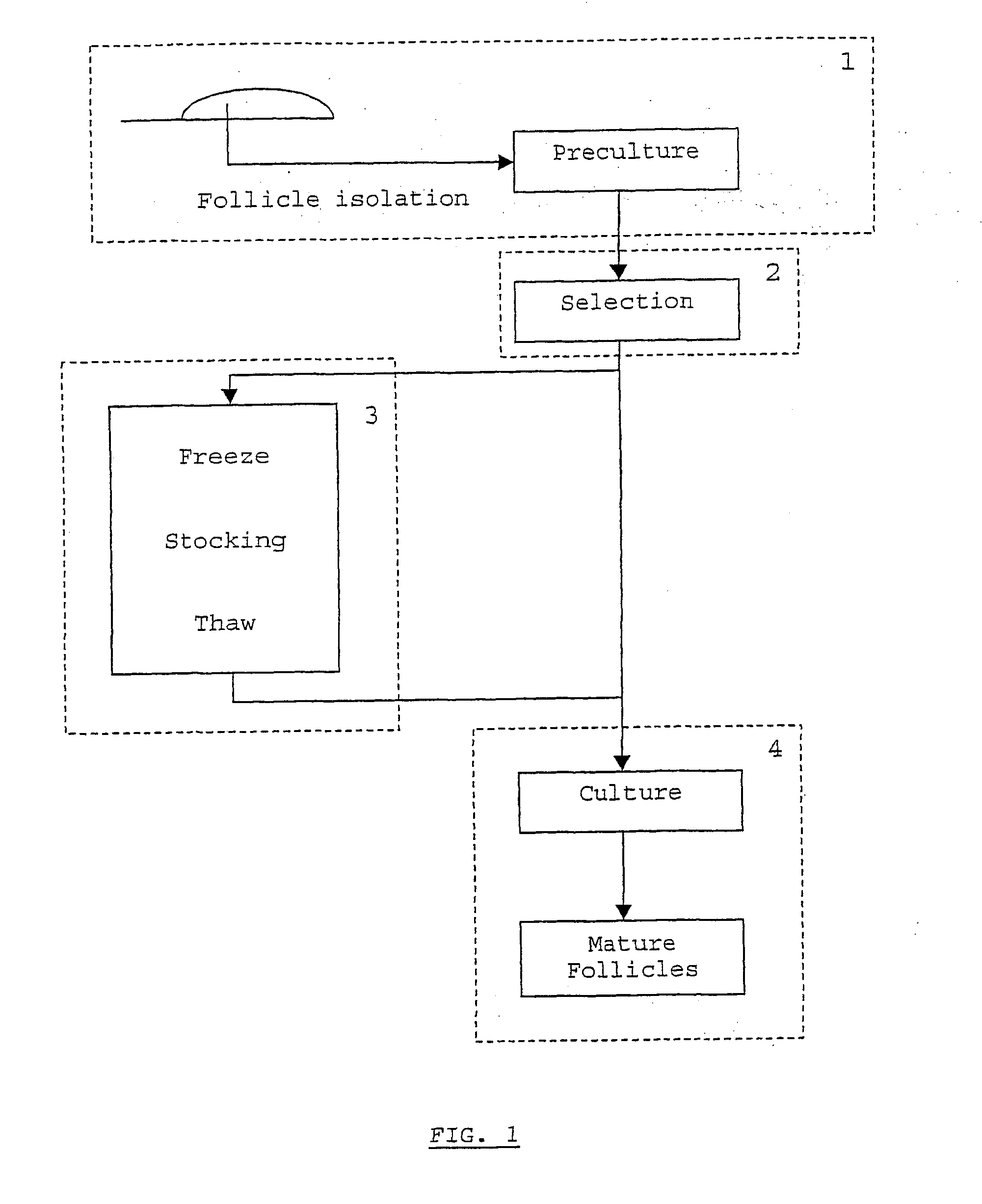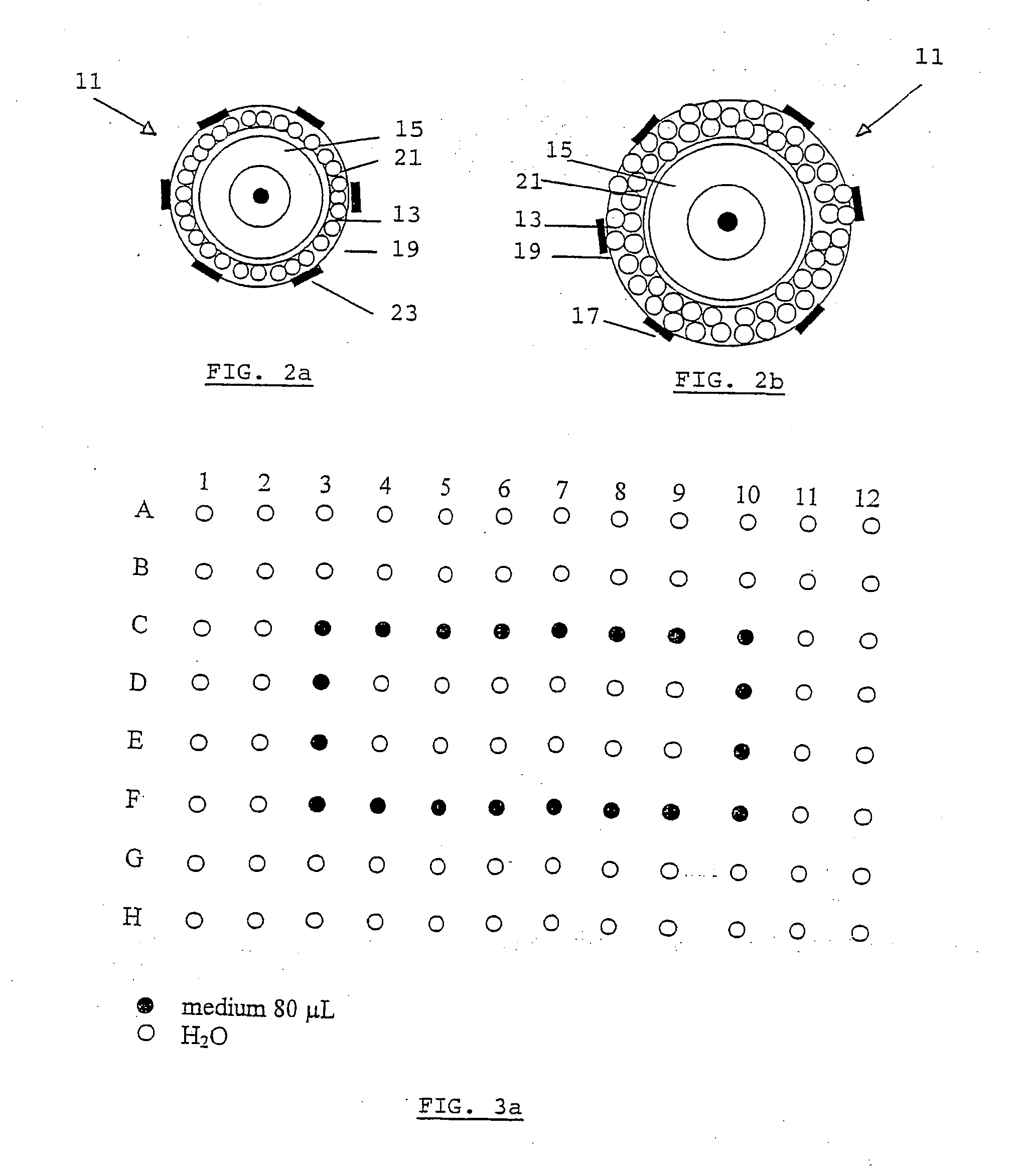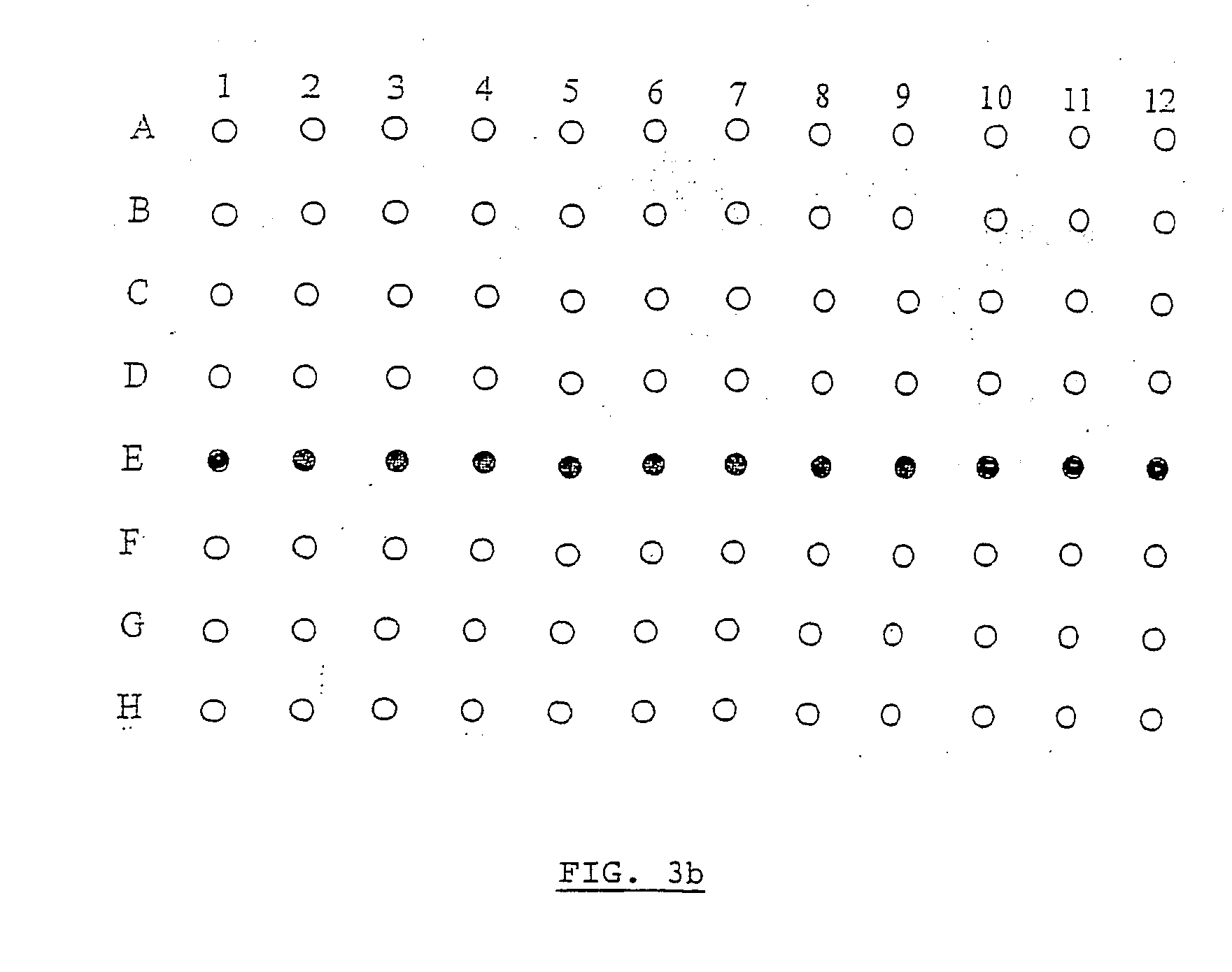Method for in vitro culture of ovarian follicles
a technology of ovarian follicles and in vitro culture, which is applied in the field of folliculogenesis, can solve the problems of inefficiency of vivo folliculogenesis, no follicle culture method is known up until now, and no practical method for collecting and storing large numbers of fertilised ova from females
- Summary
- Abstract
- Description
- Claims
- Application Information
AI Technical Summary
Benefits of technology
Problems solved by technology
Method used
Image
Examples
example 2
[0044] Selection of Follicles for the Method of the Invention (Step 2 in FIG. 1):
[0045] Not all follicles in suspension from example 1 are suitable for follicle culture. To make sure that all follicles grow at approximately the same rate, the selected follicles should have a similar diameter. In this specific case, a diameter of between 100 and 130 .mu.m is suitable and points to development of the follicle up to the early preantral (secondary) stage. In this case, follicles 11 should have two layers of granulosa cells 13 and a round-shaped oocyte 15 as can be seen in. FIG. 2b. Said follicles further comprise theca-interstitial cells 17, a basal membrane 19 and a zona pellucida 21. Follicles are observed under a stereomicroscope and measured under an inverted microscope. Suitable follicles are picked up using suitably arranged pasteur pipettes and transferred to a cryovial (for stocking, see example 3) or to a culture plate (for follicle culture, see example 4).
[0046] Follicles in a...
example 3
[0047] Creation and Use of a Follicle Stock (Step 3 in FIG. 1):
[0048] A follicle stock can be created using cryopreservation techniques known to the skilled person. An example of such a technique is described in the following paragraphs.
[0049] Follicles as obtained in Example 2 are collected in plastic cryovials (Simport, Quebec, Canada). 25 follicles per vial are suspended in 150 .mu.l of L15 medium with 10% heat-inactivated FCS and 1.5 M DMSO. Slow freezing is performed using a controlled programmed freezing machine (Cell Freezer R204; Planer, Sunbury-on-Thames, UK). Follicles are equilibrated in the freezing mixture for 15 minutes at 4.degree. C. and then cooled to -7.degree. C. at a rate of 2.degree. C. / min. After manual seeding, the temperature is lowered to -40.degree. C. at a rate of -0.3.degree. C. / min. before storage in liquid nitrogen, the follicles are very rapidly cooled to -110.degree. C. at a rate of -50.degree. C. / min.
[0050] Follicles are thawed ultra-rapidly by warmi...
example 4
[0051] Follicle Culture (Step 4 in FIG. 1):
[0052] The follicle culture comprises of at least one culture step which can provide differentiated follicles. Differentiation is provoked by using suitable media. In the method of the present invention, media can be divided in three groups: a first medium, second medium and third medium. Utilisation of the right medium at the right differentiation stage is crucial for successfully implementing the method of the present invention.
[0053] Two examples will illustrate how one can use the method of the present invention with follicles at different differentiation stages.
[0054] When referring to incubation periods, the following conditions apply except when otherwise indicated:
1 Temperature: 37.degree. C. Air mixture: 5% CO.sub.2 in air. Humidity: 100% saturated
[0055] Also, the incubation periods may vary to obtain equivalent results when using other species than mouse. The examples are optimised for the mouse system.
[0056] An overview of the fu...
PUM
| Property | Measurement | Unit |
|---|---|---|
| diameter | aaaaa | aaaaa |
| diameter | aaaaa | aaaaa |
| size | aaaaa | aaaaa |
Abstract
Description
Claims
Application Information
 Login to View More
Login to View More - R&D
- Intellectual Property
- Life Sciences
- Materials
- Tech Scout
- Unparalleled Data Quality
- Higher Quality Content
- 60% Fewer Hallucinations
Browse by: Latest US Patents, China's latest patents, Technical Efficacy Thesaurus, Application Domain, Technology Topic, Popular Technical Reports.
© 2025 PatSnap. All rights reserved.Legal|Privacy policy|Modern Slavery Act Transparency Statement|Sitemap|About US| Contact US: help@patsnap.com



